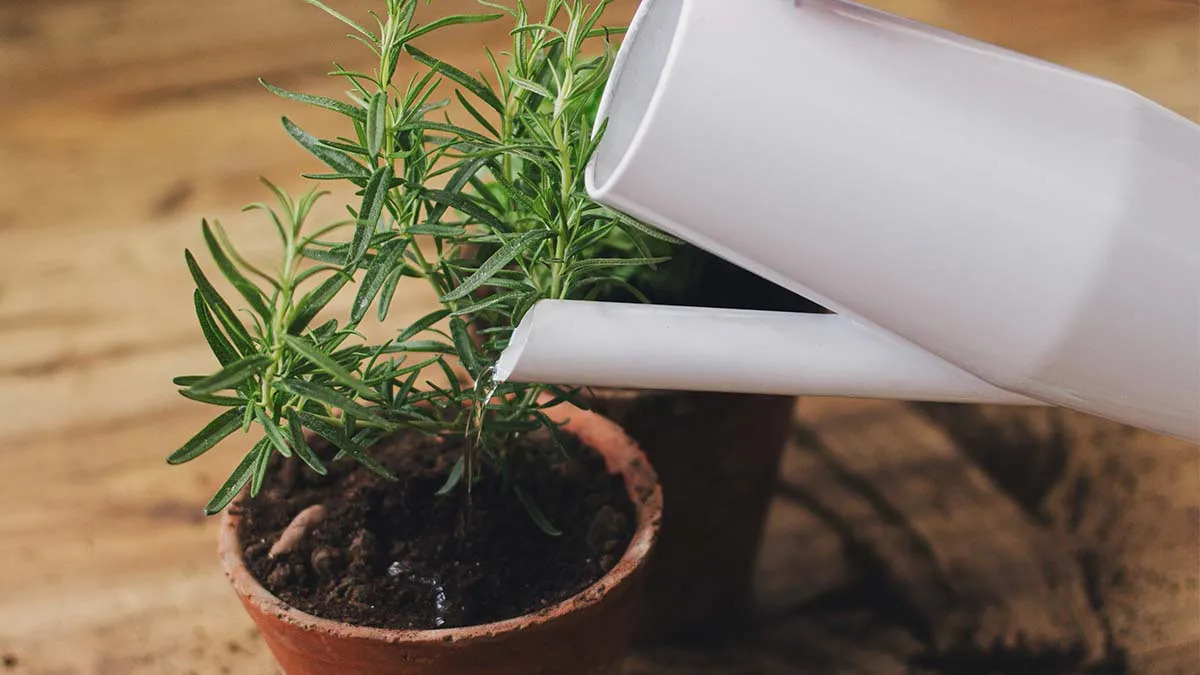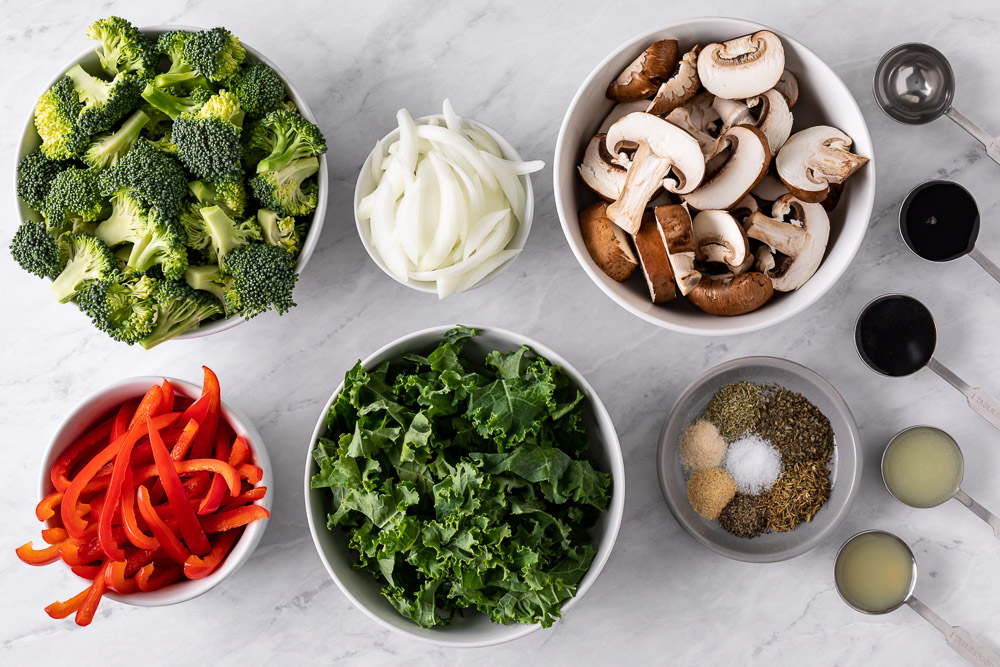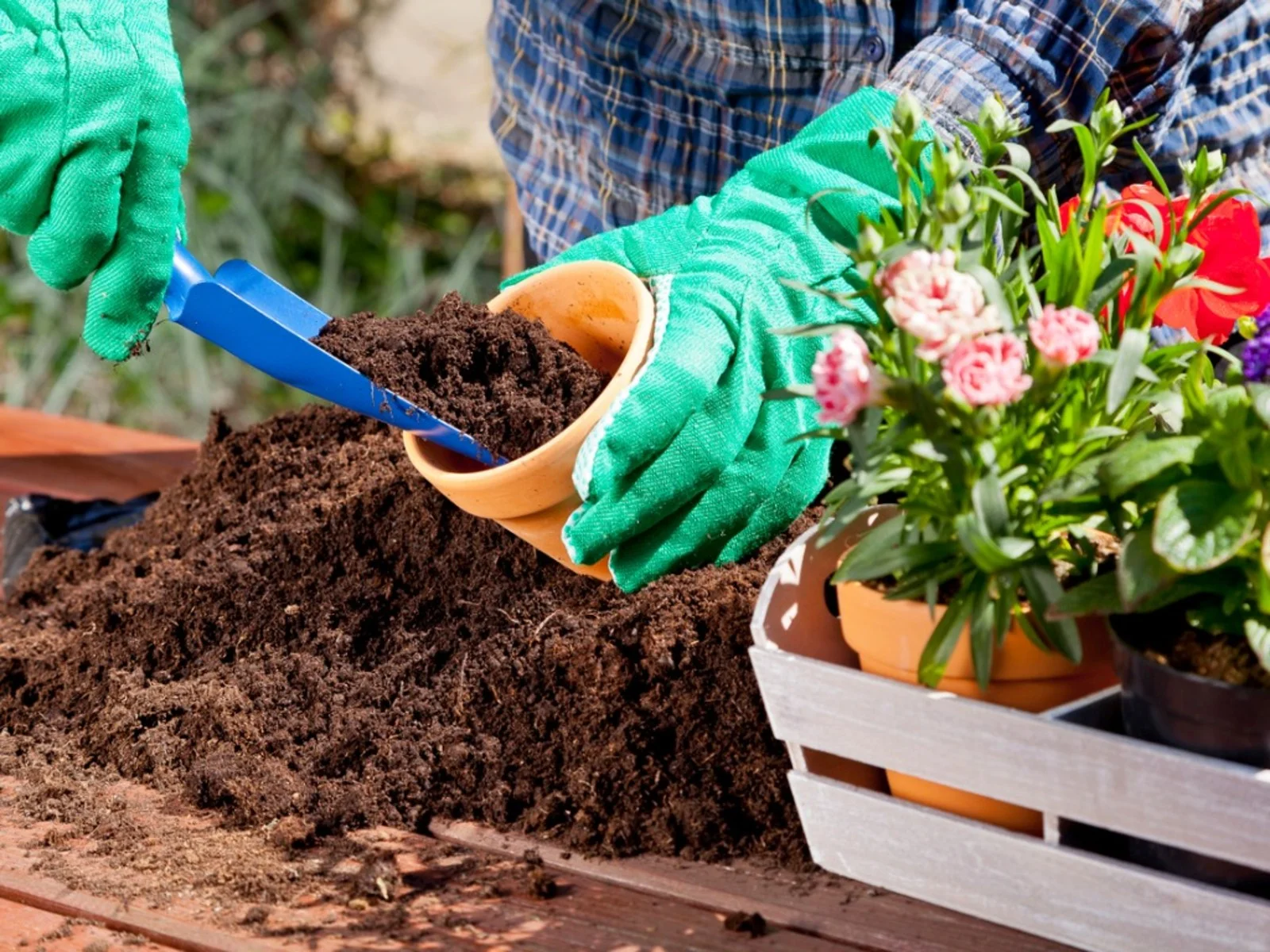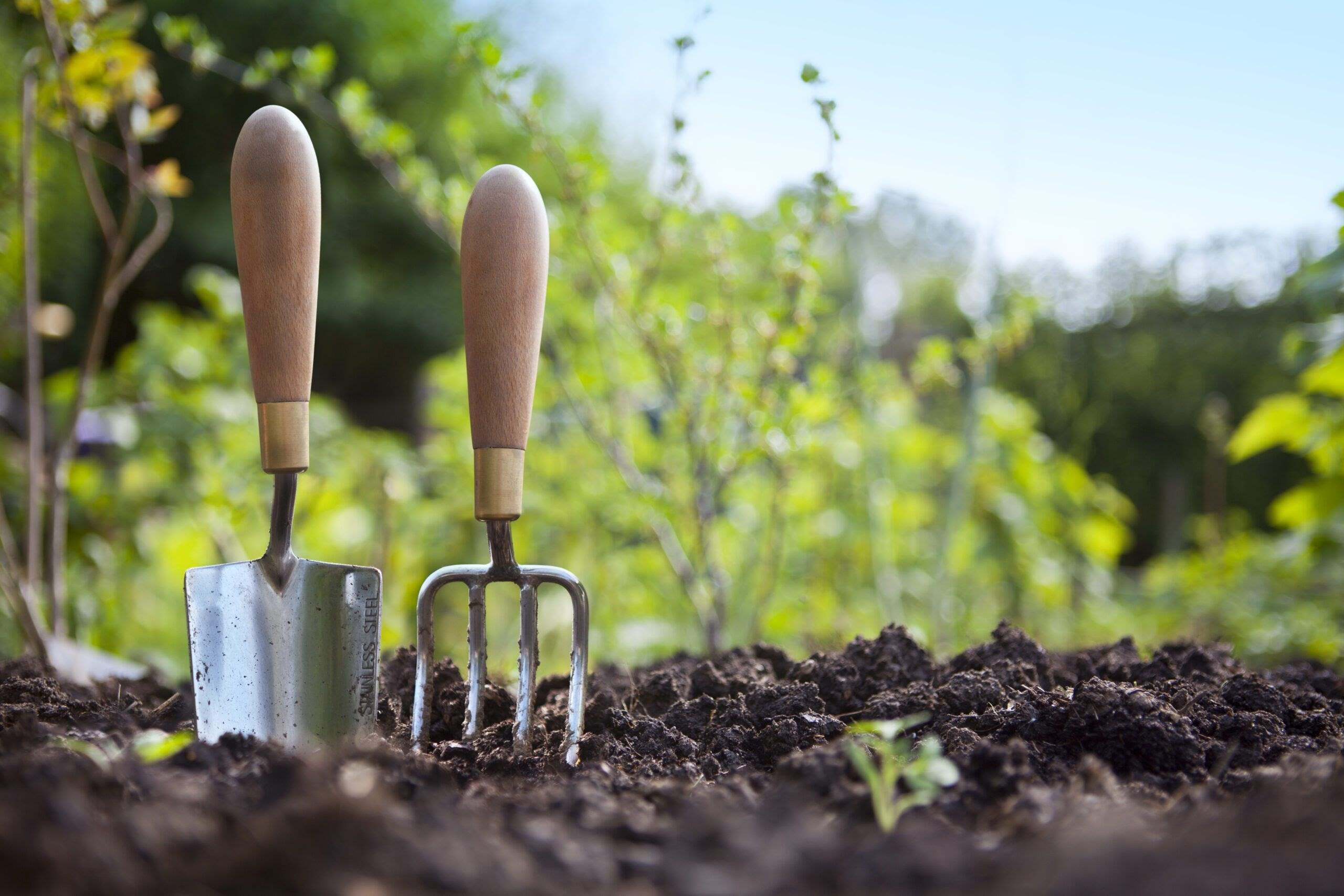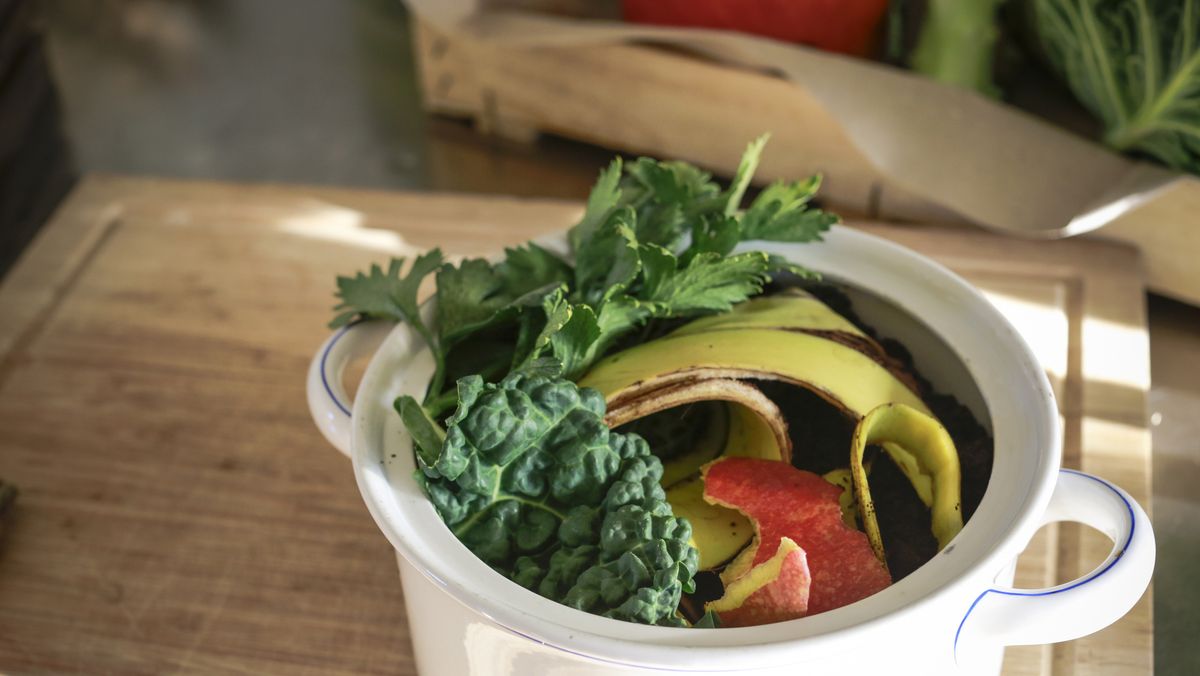Home>Gardening Basics>Understanding Soil>How To Grow Plants Without Soil


Understanding Soil
How To Grow Plants Without Soil
Published: February 10, 2024
Learn how to grow plants without soil and understand the importance of soil in plant growth. Discover alternative methods for successful plant cultivation.
(Many of the links in this article redirect to a specific reviewed product. Your purchase of these products through affiliate links helps to generate commission for Chicagolandgardening.com, at no extra cost. Learn more)
Table of Contents
**
Introduction
**
Welcome to the fascinating world of hydroponic gardening, where plants thrive without the use of traditional soil. Hydroponics, a method of growing plants in a nutrient-rich water solution, offers a sustainable and innovative approach to cultivating a wide variety of crops. This revolutionary technique not only conserves water but also maximizes space, making it an ideal choice for urban gardeners and agricultural enthusiasts alike.
Hydroponic gardening has gained popularity in recent years due to its numerous benefits, including faster growth rates, higher yields, and the ability to grow crops year-round. By providing plants with direct access to essential nutrients, hydroponic systems promote robust and healthy growth, resulting in bountiful harvests. Whether you're a seasoned gardener or a novice enthusiast, exploring the world of soilless cultivation is an exciting journey that offers endless possibilities for cultivating your favorite plants.
In this comprehensive guide, we will delve into the fundamentals of hydroponic gardening, including the various types of hydroponic systems, essential nutrients for plant growth, and the steps involved in setting up and maintaining your own hydroponic garden. By the end of this article, you will have a solid understanding of how to grow plants without soil and be well-equipped to embark on your own hydroponic gardening adventure. So, roll up your sleeves and get ready to discover the art and science of soilless cultivation!
**
Hydroponics: The Basics
**
At the core of hydroponic gardening lies the principle of providing plants with the essential nutrients they need to thrive, without relying on soil as a medium. Instead, hydroponic systems utilize a carefully balanced nutrient solution that delivers a precise blend of minerals directly to the plant roots. By bypassing the traditional soil-based approach, hydroponics offers a controlled environment where factors such as pH levels, nutrient concentration, and water availability can be meticulously regulated to optimize plant growth.
One of the key advantages of hydroponic cultivation is its ability to maximize resource efficiency. Unlike conventional soil-based gardening, hydroponic systems minimize water usage by recirculating nutrient solutions, reducing overall water consumption while promoting sustainable crop production. Additionally, the controlled environment of hydroponic setups minimizes the risk of soil-borne diseases and pests, providing a cleaner and more hygienic growing environment for plants.
Another fundamental aspect of hydroponics is the wide range of available systems, each offering unique benefits and catering to different plant varieties and cultivation goals. From simple wick systems to advanced nutrient film techniques, hydroponic gardening provides a versatile platform for cultivating diverse crops in various settings, including home gardens, commercial farms, and research facilities.
By harnessing the power of hydroponics, gardeners can unlock the potential for year-round cultivation, enabling the growth of seasonal crops regardless of external weather conditions. This flexibility empowers growers to experiment with a wide array of plants, from leafy greens and herbs to fruiting crops and flowering ornamentals, all within a controlled indoor environment.
As we delve deeper into the world of hydroponic gardening, we will explore the diverse range of hydroponic systems available, the essential nutrients required for plant growth, and the step-by-step process of setting up and maintaining a thriving hydroponic garden. Get ready to embark on a journey of soilless cultivation, where innovation and sustainability converge to redefine the art of growing plants.
**
Types of Hydroponic Systems
**
Hydroponic gardening encompasses a diverse range of systems, each tailored to specific growing environments and plant varieties. Understanding the various types of hydroponic setups is essential for selecting the most suitable approach based on available space, desired crop selection, and individual preferences. Let’s explore some of the most common hydroponic systems:
- Deep Water Culture (DWC): This system suspends plant roots in a nutrient solution, ensuring continuous access to oxygen and essential minerals. DWC setups are popular for cultivating leafy greens and herbs, offering a simple yet effective method for soilless plant growth.
- Nutrient Film Technique (NFT): NFT systems utilize a shallow stream of nutrient solution to flow over plant roots, providing a constant supply of water and nutrients. Ideal for growing smaller plants such as lettuce and herbs, NFT setups are favored for their efficient use of space and resources.
- Drip Systems: These systems deliver a regulated flow of nutrient solution directly to plant roots through drip emitters, offering precise control over irrigation and nutrient delivery. Drip systems are versatile and widely used in commercial hydroponic operations, accommodating a wide range of plant species.
- Ebb and Flow (Flood and Drain): Ebb and flow systems periodically flood the growing tray with nutrient solution before draining it away, providing plants with access to water and nutrients while allowing for proper aeration of the root zone. This method is suitable for a variety of crops, including tomatoes, peppers, and flowering plants.
- Aeroponics: Aeroponic systems mist plant roots with a nutrient solution, promoting rapid growth and efficient nutrient uptake. By suspending plants in a misting chamber, aeroponics maximizes oxygen exposure to the roots, making it an ideal choice for cultivating a wide range of plants, including strawberries, cucumbers, and peppers.
Each hydroponic system offers unique advantages and considerations, allowing growers to tailor their approach based on specific crop requirements and environmental factors. Whether you’re a home gardener seeking a compact solution for growing herbs or a commercial farmer aiming to maximize crop yields, the versatility of hydroponic systems provides a platform for cultivating a diverse array of plants with precision and efficiency.
**
Choosing the Right Plants
**
When embarking on a hydroponic gardening journey, selecting the appropriate plants for cultivation is a crucial step in ensuring successful and bountiful yields. While hydroponic systems offer a versatile platform for growing a wide range of crops, certain plants are particularly well-suited for soilless cultivation due to their adaptability to controlled environments and efficient nutrient uptake.
Leafy greens, such as lettuce, spinach, and kale, thrive in hydroponic setups, making them popular choices for both home and commercial growers. These fast-growing, shallow-rooted crops benefit from the direct access to water and nutrients provided by hydroponic systems, resulting in vibrant and nutrient-rich harvests. Additionally, herbs like basil, cilantro, and mint flourish in soilless environments, offering aromatic and flavorful yields while requiring minimal space.
Furthermore, compact fruiting plants such as strawberries and cherry tomatoes are well-suited for hydroponic cultivation, leveraging the controlled conditions to produce abundant harvests of delicious fruits. The efficient use of space and optimized nutrient delivery in hydroponic systems make them an ideal choice for cultivating these delectable crops, especially in urban or limited-space settings.
For those seeking to explore the world of hydroponic gardening on a larger scale, flowering plants such as peppers, cucumbers, and even ornamental flowers can thrive in nutrient-rich hydroponic environments. These plants benefit from the precise control over water, nutrients, and environmental factors offered by hydroponic systems, resulting in robust growth and vibrant blooms.
When selecting plants for hydroponic cultivation, it’s essential to consider the specific requirements of each crop, including optimal pH levels, nutrient concentrations, and environmental conditions. By choosing plants that are well-suited for soilless growing and aligning with your cultivation goals, you can create a thriving hydroponic garden that yields an abundance of fresh, flavorful, and visually stunning produce.
**
Essential Nutrients for Hydroponic Growth
**
In a soilless environment, providing plants with the essential nutrients they need for robust growth and development is paramount. Hydroponic systems rely on a carefully balanced nutrient solution to supply plants with the vital elements required for healthy metabolism, structural integrity, and reproductive success. Understanding the key nutrients and their roles in plant growth is essential for optimizing the performance of your hydroponic garden.
The primary macronutrients essential for plant growth include nitrogen (N), phosphorus (P), and potassium (K), often referred to as NPK. Nitrogen is crucial for promoting lush foliage and vigorous growth, phosphorus supports root development and flowering, while potassium contributes to overall plant health and disease resistance. By carefully managing the concentrations of these macronutrients in the nutrient solution, growers can support balanced and robust plant growth.
In addition to macronutrients, plants require a range of micronutrients in smaller quantities to support essential physiological processes. These micronutrients include iron, manganese, zinc, copper, boron, and molybdenum, each playing a critical role in enzyme activation, photosynthesis, and overall plant health. By ensuring that the nutrient solution contains adequate levels of these micronutrients, growers can prevent deficiencies and promote optimal growth and productivity.
Furthermore, maintaining the appropriate pH level of the nutrient solution is essential for ensuring nutrient availability and uptake by plant roots. Most plants thrive in a slightly acidic to neutral pH range, typically between 5.5 and 6.5, which supports the solubility and accessibility of essential nutrients. Regular monitoring and adjustment of the nutrient solution’s pH level are integral to preventing nutrient imbalances and optimizing plant health.
By carefully formulating and managing the nutrient solution to provide plants with a balanced blend of macronutrients, micronutrients, and the appropriate pH level, hydroponic growers can create an optimal environment for robust plant growth and abundant yields. Understanding the specific nutrient requirements of different plant species and growth stages is key to achieving success in soilless cultivation, empowering growers to cultivate a diverse array of crops with precision and efficiency.
**
Setting Up Your Hydroponic System
**
Embarking on the journey of setting up a hydroponic system is an exciting endeavor that requires careful planning, attention to detail, and a passion for cultivating thriving plants. Whether you’re establishing a compact hydroponic garden in your home or designing a larger-scale operation, the process of creating a soilless growing environment involves several fundamental steps that lay the foundation for successful plant cultivation.
The first consideration when setting up a hydroponic system is selecting an appropriate growing space that provides access to adequate light, ventilation, and environmental control. Whether you opt for a dedicated indoor area, a greenhouse, or an outdoor setup, ensuring that the chosen space meets the specific requirements of your selected plants is essential for fostering healthy growth and maximizing yields.
Once the growing space is established, selecting the most suitable hydroponic system based on your available space, desired plant varieties, and cultivation goals is paramount. Whether you choose a Deep Water Culture (DWC) setup for leafy greens, a Nutrient Film Technique (NFT) system for compact herbs, or an Ebb and Flow system for fruiting crops, each system offers unique benefits and considerations that align with specific plant requirements.
After selecting the hydroponic system, assembling the necessary components, including growing trays, reservoirs, pumps, tubing, and a reliable nutrient solution, is the next step in the setup process. Ensuring that the components are properly cleaned, sanitized, and assembled according to the manufacturer’s guidelines is crucial for creating a hygienic and efficient growing environment.
With the physical components in place, preparing the nutrient solution to the appropriate concentration and pH level for your chosen plants is essential for promoting optimal growth. Carefully monitoring and adjusting the nutrient solution to maintain the ideal balance of macronutrients and micronutrients is integral to supporting healthy plant development throughout the growing cycle.
Finally, introducing your selected plants to the hydroponic system and providing them with the necessary care, including monitoring water levels, nutrient concentrations, and environmental conditions, sets the stage for successful soilless cultivation. By maintaining a proactive approach to system maintenance and plant care, growers can create an environment where plants thrive, flourish, and yield bountiful harvests.
**
Maintaining Your Hydroponic Garden
**
Once your hydroponic system is up and running, consistent maintenance and attentive care are essential for ensuring the ongoing success of your soilless garden. By implementing proactive maintenance practices and monitoring key parameters, you can create an optimal environment for plant growth and maximize the productivity of your hydroponic setup.
Regular monitoring of the nutrient solution’s pH level is crucial for ensuring that essential nutrients remain readily available to plant roots. Fluctuations in pH can impact nutrient uptake and plant health, making it essential to adjust the pH as needed to maintain the optimal range for your selected crops. Utilizing pH testing kits and quality pH-adjusting solutions enables growers to maintain the desired acidity or alkalinity levels in the nutrient solution.
Additionally, monitoring and adjusting the electrical conductivity (EC) of the nutrient solution is vital for managing the overall nutrient concentration available to plants. By regularly measuring the EC and adjusting the nutrient solution’s strength as plants mature and consume nutrients, growers can ensure that plants receive the appropriate levels of macronutrients and micronutrients throughout the growing cycle.
Proper aeration and oxygenation of the nutrient solution are essential for promoting healthy root development and preventing issues such as root rot. Ensuring that the water is adequately oxygenated, either through the use of air stones, diffusers, or oxygen pumps, supports the respiratory needs of plant roots and contributes to overall plant vitality and productivity.
Regular inspection and maintenance of system components, including pumps, tubing, and growing trays, help prevent potential issues and ensure the efficient operation of the hydroponic setup. Cleaning and sanitizing components, checking for clogs or blockages, and replacing worn-out parts as needed contribute to a hygienic and well-functioning growing environment.
Lastly, maintaining a vigilant approach to pest and disease management is essential for safeguarding the health of your hydroponic garden. Implementing preventive measures such as regular inspections, integrated pest management strategies, and the use of beneficial insects can help mitigate potential threats and preserve the pristine growing conditions of your soilless garden.
By embracing a proactive and attentive approach to maintenance, growers can foster an environment where plants thrive, produce abundant yields, and showcase the remarkable potential of soilless cultivation. With ongoing care and dedication, your hydroponic garden can become a flourishing oasis of vibrant, healthy plants, demonstrating the power and possibilities of innovative growing techniques.
**
Troubleshooting Common Issues
**
While hydroponic gardening offers numerous benefits, growers may encounter common challenges that require proactive troubleshooting to maintain the health and productivity of their soilless gardens. By recognizing and addressing these issues promptly, growers can optimize the performance of their hydroponic systems and ensure the success of their plant cultivation endeavors.
One common issue in hydroponic systems is nutrient imbalance, which can manifest as deficiencies or toxicities in plants. Monitoring the visual cues of nutrient deficiencies, such as yellowing leaves or stunted growth, and conducting regular nutrient solution analyses can help identify and address imbalances. Adjusting the nutrient solution’s composition and concentration based on plant needs is essential for preventing and correcting nutrient-related issues.
Another prevalent challenge is pH fluctuation, which can disrupt nutrient availability and impact plant health. Regularly testing and adjusting the pH of the nutrient solution, as well as using buffering agents to stabilize pH levels, can help mitigate fluctuations and support consistent nutrient uptake by plant roots.
Root-related issues, such as root rot or insufficient aeration, can arise in hydroponic systems, particularly if the root zone becomes waterlogged or lacks oxygen. Ensuring proper oxygenation of the nutrient solution, maintaining appropriate water levels, and implementing preventive measures such as beneficial bacteria or hydrogen peroxide treatments can help address and prevent root-related challenges.
Temperature and humidity management is critical in hydroponic environments, as imbalances can impact plant transpiration, nutrient uptake, and overall growth. Monitoring and regulating environmental conditions, utilizing ventilation and climate control measures, and implementing shading or cooling strategies can help maintain optimal growing conditions for plants.
Pest and disease management is another area that requires attention in hydroponic gardening. Implementing preventive measures such as regular inspections, integrated pest management techniques, and the use of natural predators can help mitigate the risk of pest infestations and diseases, preserving the health and vitality of plants.
By proactively addressing these common issues through diligent monitoring, preventive measures, and targeted interventions, growers can overcome challenges in their hydroponic gardens and create an environment where plants flourish and thrive. Troubleshooting common issues is an integral part of the soilless cultivation journey, empowering growers to harness the potential of hydroponic systems and achieve exceptional results in their plant cultivation endeavors.
**
Conclusion
**
As we conclude our exploration of hydroponic gardening, we emerge with a profound appreciation for the innovative and sustainable approach it offers to plant cultivation. The journey of growing plants without soil is a testament to the remarkable adaptability of nature and the ingenuity of human creativity, converging to redefine the possibilities of modern agriculture and horticulture.
Hydroponic systems, with their diverse array of cultivation methods and adaptable designs, provide a platform for cultivating a wide range of crops, from leafy greens and herbs to fruiting plants and ornamental flowers. The controlled environment and precise nutrient delivery offered by hydroponic setups empower growers to maximize space, conserve resources, and achieve consistent yields, regardless of external growing conditions.
By understanding the fundamental principles of hydroponic gardening, including the essential nutrients for plant growth, the diverse types of hydroponic systems, and the meticulous care and maintenance required, growers can embark on a journey of soilless cultivation with confidence and enthusiasm. The fusion of science, technology, and nature in hydroponics exemplifies the potential for sustainable and resource-efficient agriculture, offering a glimpse into the future of food production and urban gardening.
As we embrace the art and science of hydroponic gardening, we recognize the transformative impact it has on our relationship with plants, the environment, and the way we nourish ourselves. The ability to grow fresh, nutritious produce year-round, optimize resource usage, and cultivate thriving gardens in diverse settings underscores the versatility and resilience of hydroponic systems.
In the spirit of continuous learning and exploration, we encourage aspiring hydroponic enthusiasts and seasoned growers alike to delve into the world of soilless cultivation, experiment with diverse plant varieties, and contribute to the ongoing evolution of sustainable agriculture. The journey of growing plants without soil is a testament to the remarkable adaptability of nature and the ingenuity of human creativity, converging to redefine the possibilities of modern agriculture and horticulture.
As we conclude our exploration of hydroponic gardening, we look forward to witnessing the flourishing gardens, bountiful harvests, and boundless potential that soilless cultivation offers to growers around the world. The journey of growing plants without soil is a testament to the remarkable adaptability of nature and the ingenuity of human creativity, converging to redefine the possibilities of modern agriculture and horticulture.


